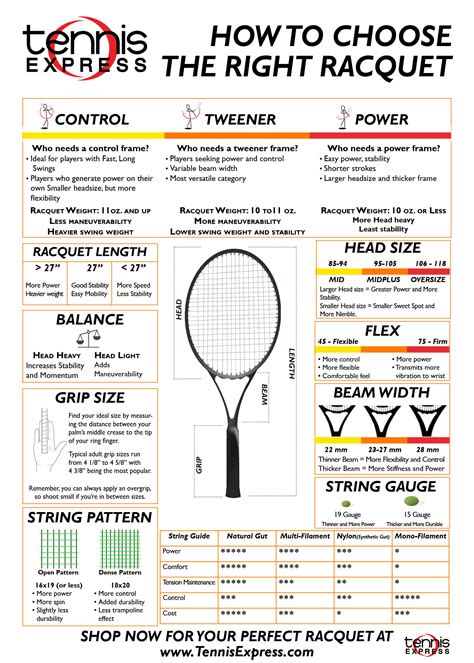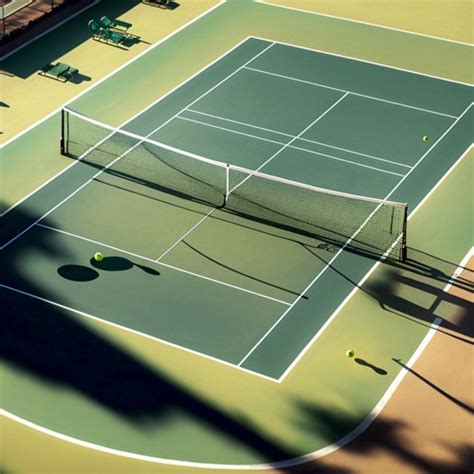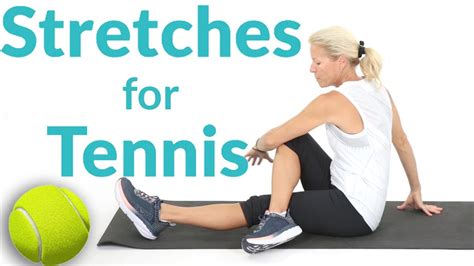Master tennis volley techniques with our expert tips, drills, and performance analysis. Improve your skills and avoid common mistakes for better results.Are you looking to elevate your tennis game and dominate the net? Mastering your volley techniques can make all the difference in your performance, allowing you to seize control of the match and outmaneuver your opponents. In this comprehensive guide, we will explore the fundamentals of tennis volleying, analyze your current performance, and provide effective drills designed to enhance your skills. Additionally, we’ll highlight common mistakes to watch out for and offer tips for tracking your progress, ensuring that you stay on the path to improvement. Whether you’re a beginner or an experienced player seeking to refine your techniques, this article will equip you with the knowledge and tools necessary to transform your volleys from mediocre to match-winning. Let’s get started on your journey to tennis excellence!
Understanding The Basics Of Tennis Volley Techniques
To effectively improve your tennis volley techniques, it’s crucial to grasp the fundamental concepts that form the backbone of successful volleys. The volley is a shot made before the ball bounces on your side of the court, requiring quick reflexes and precise execution. Here are some essential elements to consider:
- Grip: Start with the right grip. The continental grip is commonly used for volleys as it allows for flexibility in handling both forehand and backhand volleys.
- Footwork: Good footwork is vital in positioning yourself to make the volley. Make sure to stay light on your feet, use small steps, and adjust your stance as needed to maintain balance.
- Stance: A squared or slightly open stance can enhance stability. Keep your knees bent and your weight slightly forward to prepare for a quick reaction.
- Racket Position: Hold your racket in front and slightly above the waistline. Keeping the racket head up allows for better visibility of the incoming ball and facilitates a more effective strike.
- Contact Point: Aim to make contact with the ball in front of your body, allowing for better control and angle. The higher the contact point, the more control you have over the volley.
- Swing Technique: Unlike groundstrokes, volleys require a shorter and more compact swing. Focus on a gentle push rather than a full swing to maintain accuracy and manage the ball’s trajectory.
- Follow-Through: Maintain a controlled follow-through after hitting the ball. This helps with stability and can affect the direction and spin applied to the shot.
Understanding these basic principles will lay a solid foundation for your volleying skills, setting you up for success as you work on more advanced techniques and drills. Effective learning is about incorporating the fundamentals and practicing them regularly.
How To Analyze Your Current Volley Performance
Evaluating your tennis volley performance is crucial for improving your game. Understanding where you stand currently will help you identify strengths and weaknesses, enabling targeted practice. Here’s how to effectively analyze your current volley performance:
- Record Your Sessions: Use a smartphone or camera to record your matches or practice sessions. Observing your technique on video allows you to see things you might miss in the moment.
- Evaluate Key Elements: Focus on specific components of your volleys, such as footwork, racket position, and follow-through. You can create a checklist to ensure you assess each element thoroughly.
- Seek Feedback: Consider asking a coach or experienced player to evaluate your volleys. They can provide insights into areas of improvement that might not be obvious to you.
- Utilize Technology: Use apps or software that provide performance analytics. Some applications can track various statistics like shot accuracy, speed, and consistency.
Once you have gathered sufficient data on your volley performance, create a table to summarize your findings. This will help in keeping track of your progress over time.
| Date | Weaknesses Identified | Strengths Noted | Action Items |
|---|---|---|---|
| MM/DD/YYYY | Poor footwork on approach | Strong follow-through | Practice specific footwork drills |
| MM/DD/YYYY | Inconsistent racket angle | Quick reaction time | Focus on racket positioning exercises |
By systematically analyzing your volley performance using these steps, you can accurately track improvements and adjust your training as necessary.
Effective Drills To Enhance Your Volley Skills
Improving your tennis volley techniques involves consistent practice and targeted drills. Here are several effective drills that can significantly enhance your volley skills:
- Wall Volleys: Stand a few feet away from a wall and hit volleys against it. Focus on keeping your feet moving and maintaining proper form. This drill helps develop hand-eye coordination and allows you to practice your timing.
- Partner Drill: Work with a partner who tosses or feeds balls to you at the net. Concentrate on your footwork, positioning, and follow-through. This drill simulates real-match situations, making it invaluable for improving your reflexes.
- Target Volleys: Set up targets (like cones or hula hoops) on the opposite side of the net. Aim to hit your volleys into these targets to increase your accuracy and control. Adjust the distance and difficulty of the targets as you improve.
- Reaction Ball Drill: Use a reaction ball (a ball with an irregular shape). Have someone throw the ball randomly so that it rebounds unpredictably. This drill boosts your reaction time and helps you adapt to various shot angles.
- Footwork Ladder: Incorporate agility training with a footwork ladder. Practice quick lateral movements to improve your positioning at the net. Good footwork is crucial for executing effective volleys.
Consistency is key. By regularly integrating these drills into your practice routine, you’ll be well on your way to mastering your volley techniques. Remember to focus on your form and maintain a positive mindset as you practice.
Common Mistakes To Avoid While Vollying
Improving your tennis volley techniques requires not just practice but also an awareness of common mistakes that many players make. Recognizing these pitfalls can help you refine your skills and play more effectively on the court. Here are some key mistakes to avoid while how to enhance your volley game:
By being aware of these common mistakes, you can better focus on your technique and make the necessary adjustments to improve your overall performance. Understanding what to avoid is just as important as knowing what to do when you want to learn how to improve your volley skills.
Tracking Your Progress: Measuring Improvement In Your Volleys
Measuring your progress in tennis volleys is essential to understanding how to enhance your techniques effectively. By establishing a clear method of tracking your performance over time, you can identify improvements and areas that require further refinement. Here are several strategies to help you gauge your progress:
- Set Specific Goals: Define clear, measurable objectives related to your volley performance, such as accuracy percentages or the number of successful volleys within a practice session.
- Video Analysis: Record your practice sessions to visually assess your techniques. Watching your volleys in action will allow you to spot any inconsistencies and adjust your technique accordingly.
- Keep a Training Journal: Documenting your practices, including drills completed and self-assessed performance, can provide insights into your improvement over time.
- Utilize Performance Metrics: Use statistics to track specific aspects of your volleys, such as speed, bounce height, and placement accuracy. This data can be invaluable in determining areas that need more focus.
- Regular Assessments: Periodically evaluate your volley skills during play or practice matches. Assess how your volleys affect point outcomes and adjust your play strategies as necessary.
By actively tracking your progress with these methods, you’ll establish a strong foundation for continually improving your technique and mastering the art of the volley. Remember, the key is consistency and regular evaluation to achieve your goals on the court.
Frequently Asked Questions
What are the key components of an effective tennis volley technique?
Key components include proper grip, footwork, body positioning, and a focused eye on the ball.
How can I improve my footwork for volleying?
Improving footwork can be achieved through drills that emphasize quick lateral movements and positioning yourself correctly for each shot.
What grip should I use for volleys?
The continental grip is commonly recommended for volleys as it allows for versatility in shot-making.
How important is body positioning in volleying?
Body positioning is crucial as it helps you maintain balance, control your shot, and react quickly to your opponent’s return.
What drills can enhance my volleying skills?
Drills such as the wall volley drill, partner volley drills, and target practice can significantly enhance your volleying skills.
Can mental focus influence my volley performance?
Yes, mental focus plays a significant role; being aware of your opponent’s position and anticipating their shots can greatly improve your volleying.
How often should I practice my volleys?
Regular practice is important; aim for at least two to three dedicated sessions per week to see consistent improvement.









